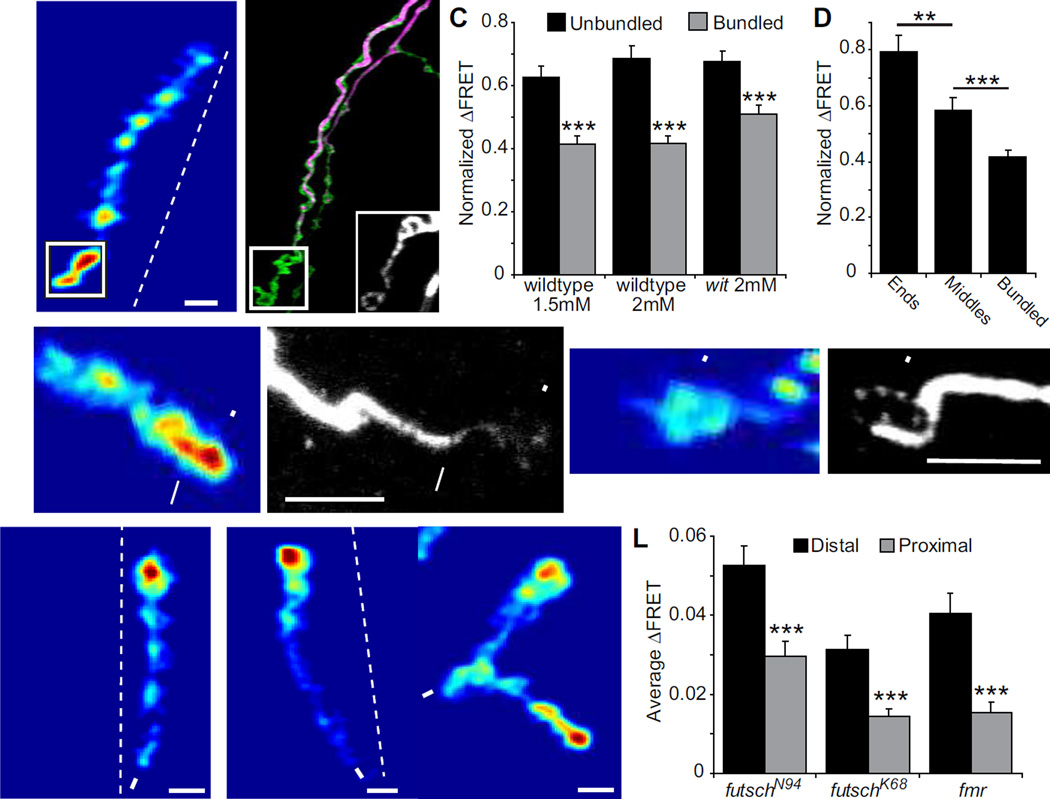Figure 4.
Correlation between strong postsynapses and presynaptic loops of unbundled Futsch. (A–B) Example of a wildtype recording at 1.5 mM Ca2+, where the boutons with the two strongest SynapCam responses also have loops of Futsch (scale:0–0.11). (B) Futsch is stained in purple, HRP in green and the inset is an enlarged image of the Futsch stain in the boxed region and at a higher gain. (C) Postsynapses in wildtype (at both 1.5 mM and 2 mM Ca2+) and witHA2/witHA3 mutants with unbundled presynaptic Futsch have a significantly larger average ΔFRET than those with bundled Futsch fibers (n > 40 postsynapses for every bar, p < 0.001 between unbundled and bundled for all genotypes). ΔFRET values were normalized to the strongest postsynapse in each NMJ. (D) End boutons and middle boutons with unbundled Futsch have larger ΔFRET than bundled Futsch. The data was taken from wildtype NMJs at 1.5 mM Ca2+. (E–F) Example of strong bouton with bundled Futsch (arrow) next to strong bouton with faint diffuse Futsch staining (arrowhead). (G–H) Example of end bouton with loop of Futsch (arrowhead), but with low ΔFRET. The NMJs in (E–H) are from wildtype larvae recorded in 1.5 mM Ca2+ and scale bar = 5 µm. (I–K) Mean ΔFRET of (I) futschN94 hypomorph (scale: 0–0.045), (J) futschK68 null mutant (scale: 0–0.09) and (K) fmrΔ113/fmrΔ50 mutant (scale: 0.09), all recorded at 1.5 mM Ca2+ and −100 mV holding potential. (L) The synaptic gradient is not impaired in futschN94 (n = 24), futschK68 (n = 17) or fmrΔ113/fmrΔ50 (n = 26).

